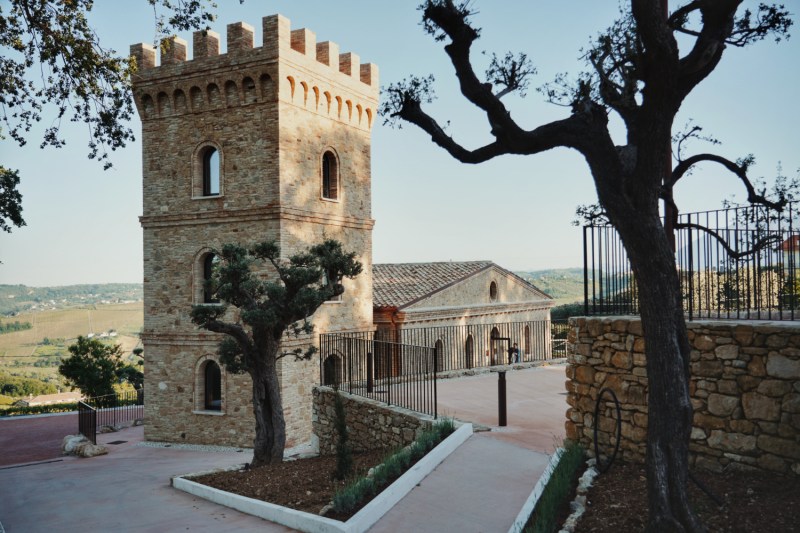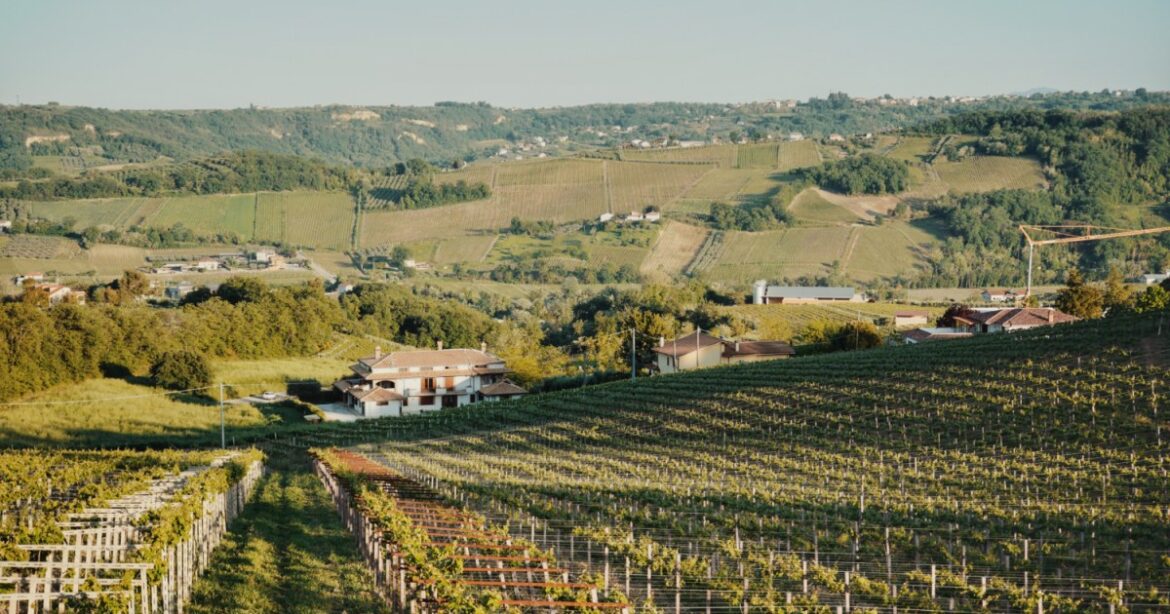Trebbiano may not have a place in the spotlight quite like Pinot Gris or Vermentino but it deserves a place on your table. It’s one of the most widely planted grapes in Italy and is way more versatile than you might think. Turns out, Trebbiano is way more than just a grape used in drinks like Armagnac and Cognac — it’s a big player when blended into whites as well as a fantastic standalone varietal.
Federico De Cercio is the owner and winemaker at Torre Zambra in Italy. The historic cellar is located in Abruzzo, east of Rome in the central part of the country. There, like a lot of places in Europe, Trebbiano thrives.
“As a wine producer, I love its versatility,” he says. “From the same vineyard, you can craft robust wines with incredible aging potential, as well as light, easy-drinking, aperitivo-style wines. As a wine drinker, I’m particularly drawn to the more complex expressions — I love how beautifully Trebbiano can evolve with age.”
An unsung hero

Torre Zambra
Trebbiano goes way back to the Roman era. It also goes by Ugni Blanc and is now planted in places like Argentina, California, and Portugal. In Italy, the grape is especially beloved but it hasn’t always been that way.
“Over the past decades, Trebbiano has often been undervalued in terms of quality because many winegrowers didn’t fully understand it, using it primarily for its high yields and disease resistance,” De Cercio says. “That’s why, in the 1980s, many producers in Abruzzo shifted production from table grapes to Trebbiano.”
The varietal’s medium body made it useful for spirits, he says. But soon, that side of the grape sort of took over and it was mainly used to create a denatured alcohol base. “As a result, there was little incentive to focus on quality — quantity became the priority,” he says.
In addition to those spirits, Trebbiano is also used in vin santo, the popular post-meal Italian sipper. It’s dubbed Saint-Émilion in some places, or Thalia in Portugal, adding to the confusion. What is known is that is likely found its way onto the planet in the eastern Mediterranean and made its way stateside via Italian immigrants.
“Fortunately, a few winegrowers recognized the potential of Trebbiano and believed it could produce exceptional wines. I can say my father was among them, and that’s the story behind our most premium white wine, the single-vineyard Trebbiano d’Abruzzo ‘Piana Marina,’” he says.
De Cercio credits the visionary producers of the region for looking past just high yields and taking into account terroir and how the wines could express themselves based on the soil. “When grown on calcareous and sandy soils rather than clay, production per hectare naturally decreases, which in turn enhances quality and character,” he says. “Another key factor has been the introduction of controlled fermentation temperatures, which allow the grapes to fully express their aromatic potential.”
Trebbiano today (and tomorrow)

Torre Zambra
“Today, Trebbiano d’Abruzzo is one of the most multifaceted white grape varieties in the Italian wine industry. Its expressions range from the most common still version, vinified in stainless steel tanks, which offers elegant citrus aromas and a fresh, light body, to the lesser-known oak-fermented style, revealing extraordinary notes of nectarine and nuts, beautifully balanced with a full-bodied structure,” De Cercio says.
At Torre Zambra, the Trebbiano is given the single-vineyard treatment. The vines are a half-century old and rooted to sandy soil. The label also employs a distinctive fermentation process, mixed in new oak and stainless before aging in concrete vats for 15 months. “The result is truly a must-try,” De Cercio says.
Trebbiano blends well too, thanks to both a bright acidity and moderate aromatic profile. Torre Zambra creates a bianco wherein Trebbiano combines with Passerino (floral aromas) and Pecorino (fruity profile). The result is a well-balanced white indeed.
What’s one to do with such a wine? Enjoy it on its own, of course, especially if it’s a single-vineyard option. De Cercio also appreciates the higher-end Trebbiano D’Abruzzo wines with local fare. “I love enjoying them on their own as a meditation wine, or paired with Abruzzo beef tartare or carpaccio,” he says.
What’s next for Trebbiano? Expect to see more creative winemakers in the west coast of the U.S. and elsewhere experimenting with the grape and continuing to bring it out of the shadow cast by usage in spirits. Sommeliers already seemed to be interested and with bright, terroir-driven wines still all the rage, Trebbiano would seem to have a secure future. People are really gravitating towards white wines with minerality and a touch of salinity and Trebbiano typically offers as much and more.
“I expect we’ll see the consolidation of a few high-end Trebbiano labels, which will become the pride of the region, alongside many easy-drinking expressions,” De Cercio says.
Want to try some out? Obviously, seek out some D’Abruzzo options like Torre Zambra. Also look out for Tenuta Terraviva and some domestic options, like Wölffer Estate in New York or New Clairvaux in California. Some even make an orange wine out of the grape.


Dining and Cooking